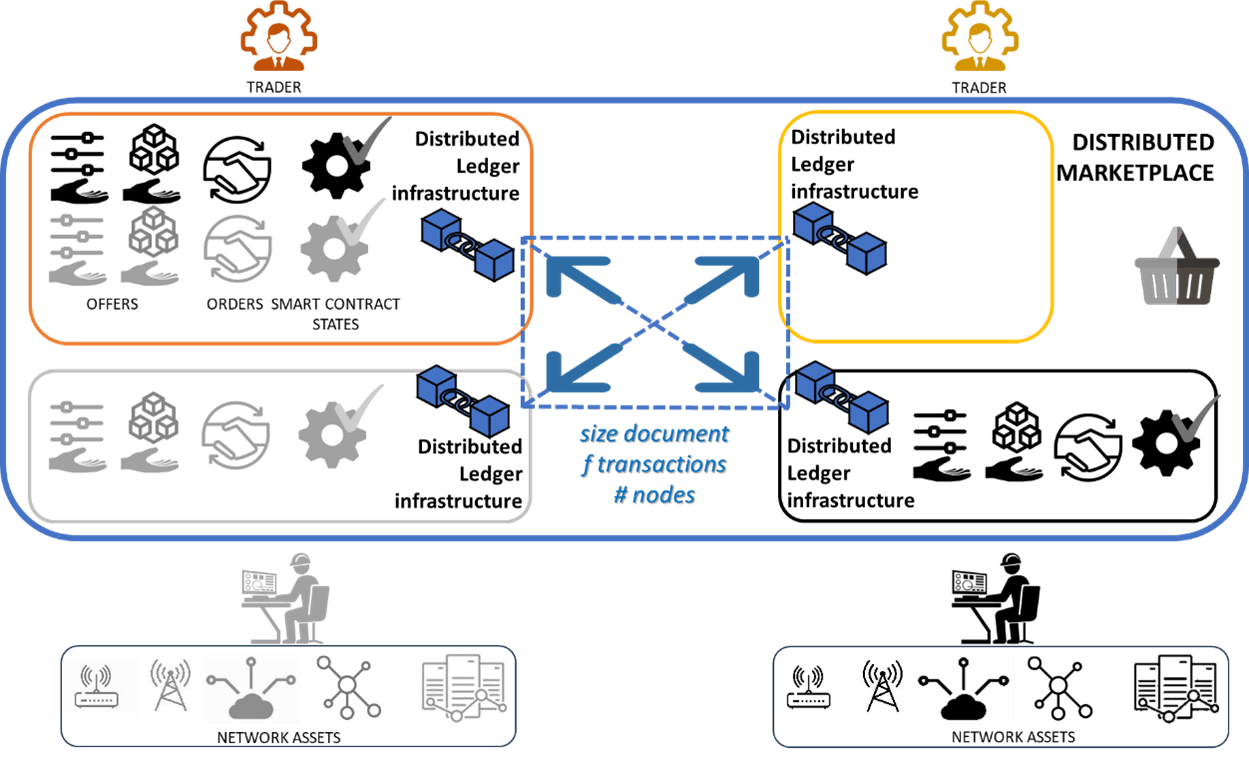
Keep up to date with our innovative initiatives.
Sign up here
The 6GENABLERS-DLT project envisions a future where virtualization and softwarization of the next-generation networks enable new possibilities for network trading across different actors. Thus, after the digital transformation of networks, Provisioning as a Service is the next natural step. For the digital trading of assets and coins, Distributed Ledger Technologies (DLTs) have proven their features to favour decentralized and transparent storage of distributed and immutable transactions.
Fueled by the relevance of digital currencies and smart contracts, the DLT solutions are burgeoning with some open-source solutions as the more widely used, such as Hyperledger Fabric, Quorum and Corda. Those alternatives satisfy some requirements for a decentralized marketplace of 6G networks, such as the support of permissioned environments required by private platforms. However, each one brings differences to meet the marketplace needs, from qualitative aspects such as the community or programme language compatibility with impact on the maintenance and sustainability of the software platform or the documentation and examples to deploy a modular and multi-node setup, to quantitative indicators such as the performance, efficiency in CPU, RAM and stability of processes when the scale and frequency of data, users and DLT nodes go up, and technical aspects such as the consensus algorithm to grant storage of new records from the distributed DLT nodes.
From the technical perspective, if the programming language, the consensus algorithm or the persistence type of data is not discarding any candidate, a fair comparison of the different corners of DLT alternatives is essential. The results obtained in the 6GENABLERS-DLT show that the performance, efficiency and stability heavily rely on the size of messages, their frequency and the number of concurrent users. This means that selecting an appropriate DLT technology needs the definition of the nominal information that will be stored and the expected volume of users that will concurrently access it.

In this regard, the 6GENABLERS-DLT project has identified TM Forum specifications for Product Offering, Ordering and Service Level Agreement (SLA) declaration. Hence, the messages to be stored are clearly characterised. There is a technology stopper for their frequency, as the transactions need to be turned into xNF deployments and configurations, which are not instantly applied and require some bootstrapping time. In terms of the users’ scale, this is a key factor directly related to the success in the enrolment of network infrastructures and traders.
All these aspects are crucial when designing a marketplace with a DLT system in the core as the base to register and notify any trading transaction.
Author: Angel Martin, Senior Researcher at Vicomtech